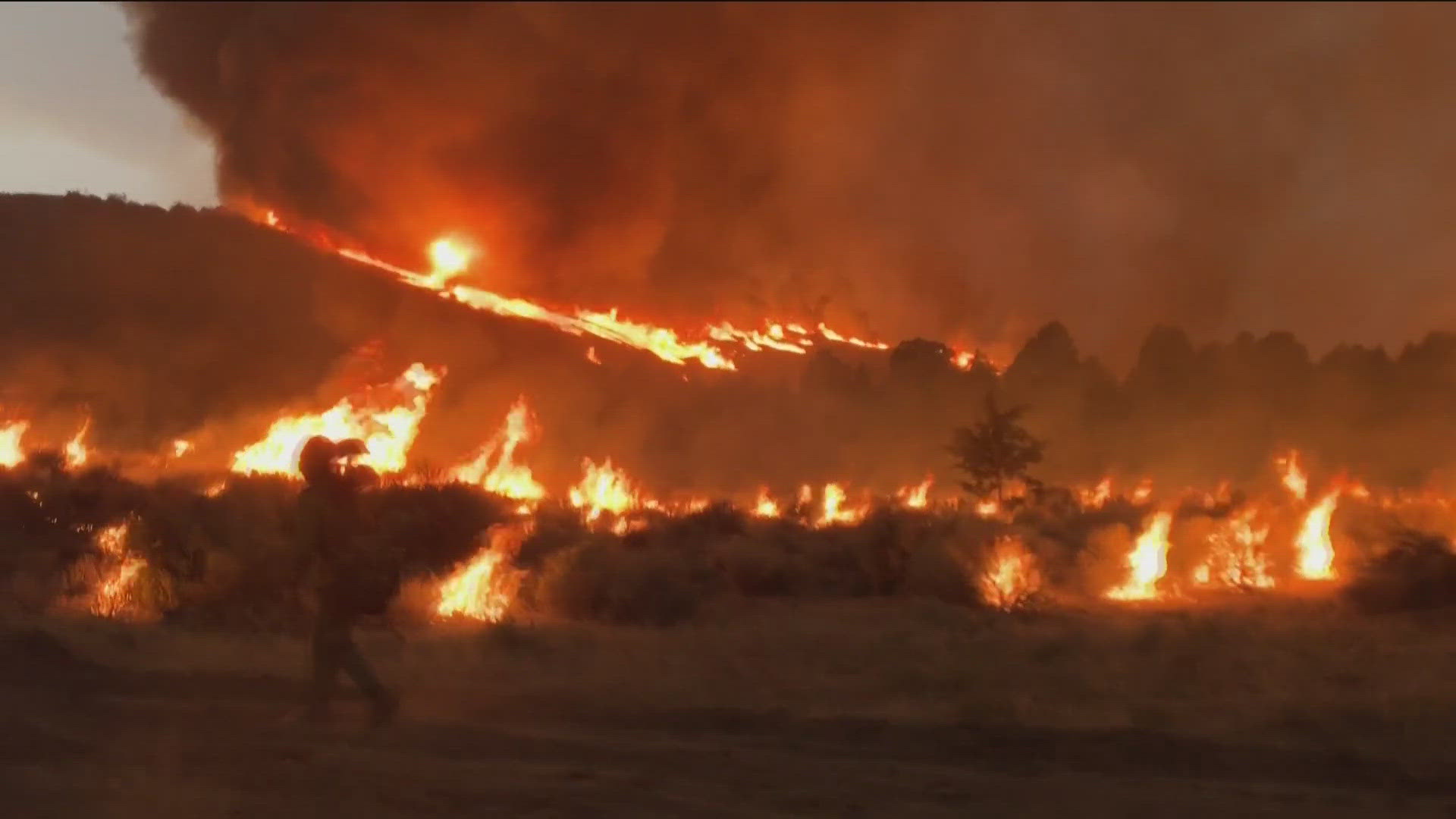IDAHO, USA — Some people in southern Idaho may experience no air conditioning, lights, or refrigeration during the hottest months of the year. But it's all in hopes of keeping people safe.
Idaho Power is conducting community outreach to ensure that people are aware of a program called the "Public Safety Power Shutoff" Plan (PSPS Plan). The plan includes shutting down power to certain areas, when weather conditions create an increased wildfire risk.
"Our number one goal it the safety of the public and our communities," said Jon Axtman. He's the Director of Wildfire Mitigation and Transmission and Distribution Engineering.
Even though the plan aims to keep people safe, it could still be leaving you in the dark.
"The community response overall has been pretty positive. We've heard from people that have come from out of state that give us feedback that they'd rather see us shut the power off than have a wildfire," Axtman said. "So the criteria that we'll be looking for is dry vegetation, really low humidity levels, and high winds," Axtman elaborated.
A PSPS event could be triggered in summer or early fall when strong winds are expected. If winds knock down powerlines while they're live, they can start a fire.
This plan isn't entirely new. Idaho Power says the planning started in 2021, and the plan was actionable in time for the 2022 wildfire season.
"It was really in response to the increase in the frequency and intensity of wildfires that we're seeing throughout the West," Axtman said.
KTVB asked about the liability and if that's a part of the equation is something which is considered.
"There is liability for electric utilities, anytime an object makes contact with our power lines or potential for arcs or sparks that could fall to the ground," Axtman responded.
In 2022, Idaho Power agreed to pay $1.5M in a settlement to the federal government. This was related to two fires that happened in 2014 and 2015 in Baker County, Oregon.
Those fires burned about 12,000 acres of land, some of which was BLM land. The federal government argued the fires were caused when Idaho Power's transmission lines failed. Idaho Power said they strongly deny this. The company says they opted to agree to the settlement to avoid a longer, drawn out legal process.
Idaho Power also said these fires and the resulting lawsuit were not related to the creation of this plan.
The PSPS Plan has never been put into action before.
"We only plan on using it as a last resort," explained Axtman.
Wildfire risk over the past few years has increased but, not equally across the state. Some areas have a higher risk, like homes built in the foothills north of Eagle, where grasses grow long and fires can move very quickly.
"As more people move here, we're updating our risk models. Our risk maps are being updated to reflect changes in that wild urban interface area," Axtman said.
KTVB asked if the risk has gone up since the plan was developed in 2019.
"Yeah, we've seen some areas where our wildfire risk zones have expanded," Axtman responded.
Power may be cut to people in or near these wildfire risk zones, while the inclement weather is happening. You can find a link to those wildfire risk zones here.
"We recognize how impactful de-energizing the power lines can be for our customers and their daily lives. So, we don't take the decision very lightly," added Axtman.
Since we use electricity for just about everything, it will help to be prepared for what every day tasks might look like without it.
"Like how to open their garage door, how do they prepare their food in the freezer to help it last longer, and even being prepared for things like medications," explained Axtman.
The public is seeking information on how to prepare for a power outage. Idaho Power's tips for being prepared here.
You'll also want to ensure your contact information with Idaho Power is current so you'll get email and text updates. That way, you'll get the most up-to-date information about the potential outage.
Again, this plan has not been put into action yet and Idaho Power considers it a last resort.
The utility company uses other mitigation methods more regularly. They rebuild power lines, inspect and prune vegetation near power lines, and can change settings as well. For example, they can change a sensitivity setting so the system will trip more easily and hopefully avoid a fire.
Watch more Local News:
See the latest news from around the Treasure Valley and the Gem State in our YouTube playlist:
HERE ARE MORE WAYS TO GET NEWS FROM KTVB:
Download the KTVB News Mobile App
Apple iOS: Click here to download
Google Play: Click here to download
Watch news reports for FREE on YouTube: KTVB YouTube channel
Stream Live for FREE on ROKU: Add the channel from the ROKU store or by searching 'KTVB'.
Stream Live for FREE on FIRE TV: Search ‘KTVB’ and click ‘Get’ to download.

